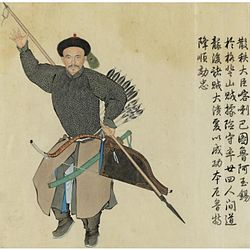


Ayusi (Manchu :ᠠᠶᡠᠰᡳ, Möllendorff : Ayusi, Abkai : Ayusi; simplified Chinese :阿玉锡; traditional Chinese :阿玉錫; pinyin :Āyùxī) was a Dzungar officer of the Qing dynasty of China. He is best known for his achievements against the Dzungar Khanate. His achievements allowed the Qing dynasty to pacify northern Xinjiang. [3] [4] [5]

